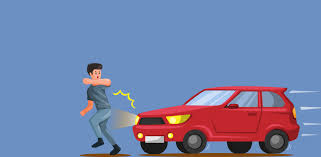Motor vehicle Laws Pitcairn Islands (BOT)
The Pitcairn Islands are a British Overseas Territory (BOT) located in the South Pacific, and as such, its laws are derived from UK law but adapted to the local context. The territory comprises the islands of Pitcairn, Henderson, Ducie, and Oeno. Motor vehicle laws in Pitcairn Island are relatively simple due to its small size and population, with motor vehicles mostly limited to Pitcairn Island (the only inhabited island).
Here is an overview of the motor vehicle laws and regulations that apply to the Pitcairn Islands:
1. Vehicle Registration
- Vehicle Registration: All vehicles on Pitcairn Island must be registered with the Pitcairn Islands Government. Vehicle owners must complete the registration process, which includes providing proof of ownership and paying registration fees.
- License Plates: Vehicles are issued license plates by the government, which must be displayed on the vehicle.
- Vehicle Tax: There is typically a registration fee or tax for vehicles, though this is quite minimal due to the small number of vehicles on the island.
2. Driver’s License
- Eligibility: To drive a motor vehicle on Pitcairn Island, individuals must hold a valid driver’s license. The age requirement for obtaining a license is typically 18 years.
- Local Licensing: Since the island has a very small population, the Pitcairn Islands Government issues and maintains the driver’s license records. Applicants must pass a basic driving test and a vision test if necessary.
- International Driver's Permits (IDP): International drivers can use their International Driver’s Permit (IDP) for driving in Pitcairn for a temporary period, though this is not a common scenario due to the limited number of visitors to the island.
3. Traffic Rules and Regulations
- Speed Limits: Given the limited infrastructure and population, the speed limits on Pitcairn Island are quite low, with the maximum speed limit generally set at 20 km/h (12 mph) on most roads.
- Traffic Signs and Road Markings: The roads on Pitcairn are narrow, often unpaved, and less formal, so there are few traffic signs and road markings. However, basic road safety signs and rules, such as yielding to pedestrians, are in place.
- Pedestrian Safety: There are limited pedestrian crossings, and drivers are expected to exercise caution and yield to pedestrians.
- Driving Under the Influence (DUI): The laws governing driving under the influence of alcohol or drugs are in line with general British standards. Drunk driving is illegal and may lead to penalties such as fines or suspension of the driver’s license.
4. Motorcycle and Bicycle Regulations
- Motorcycles: Motorcycles are less common on Pitcairn Island, but those who do use them must comply with the same general traffic rules as other vehicles.
- Helmets: Wearing a helmet while riding a motorcycle is mandatory to ensure the rider’s safety.
- Bicycles: The use of bicycles is more common than motorcycles. Cyclists are expected to follow the same basic traffic rules, and helmets are recommended but not legally mandated.
5. Public Transport
- Limited Public Transport: The public transportation system on Pitcairn Island is extremely limited due to the island’s small size and sparse population. Most transportation is done using private vehicles, often shared among community members.
- Taxis and Other Services: The island does not have a formal taxi system. Transport is typically arranged through private vehicles, and visitors or newcomers may rely on local residents for transportation.
6. Traffic Violations and Penalties
- Speeding and Reckless Driving: Violations like speeding or reckless driving, though less common due to the limited traffic, would lead to fines or potential suspension of driving privileges.
- Traffic Accidents: In the event of an accident, all drivers are expected to stop and exchange information. Given the island’s small size, serious traffic accidents are rare, and the community is highly cooperative in resolving any issues.
7. Road Safety and Maintenance
- Road Conditions: The roads on Pitcairn Island are mainly unpaved, and vehicles are typically used for navigating rough terrain. Therefore, the road safety standards are focused on driving at slower speeds, taking care on uneven surfaces, and ensuring that vehicles are well-maintained to handle the conditions.
- Road Safety Education: Road safety education is minimal but emphasized in the local community, particularly given the small size and tight-knit nature of the population.
8. Environmental Considerations
- Emission Standards: The island’s relatively small population and limited number of vehicles mean that environmental regulations on vehicle emissions are not a major concern. However, it is understood that vehicles on the island are expected to meet basic emission standards.
9. Environmental and Community Impact
- Impact of Limited Vehicles: The limited number of vehicles on Pitcairn Island means that traffic congestion and pollution are not significant issues. Vehicles tend to be used sparingly, with many residents walking or using smaller, more environmentally friendly modes of transport.
- Local Initiatives: There are no specific large-scale environmental policies, but the close-knit community tends to focus on sustainability and responsible usage of resources.
Conclusion
Motor vehicle laws on the Pitcairn Islands are relatively simple due to the small size and population of the island. Vehicle ownership is limited, and public transport options are non-existent, with most residents relying on private vehicles. Basic rules governing speed limits, driver licensing, vehicle registration, and traffic safety are in place, but the regulations are less strict than those in larger countries due to the unique nature of the island. Vehicles are subject to simple registration requirements, and driving is typically carried out in a manner that emphasizes safety and caution given the island’s road conditions.




0 comments